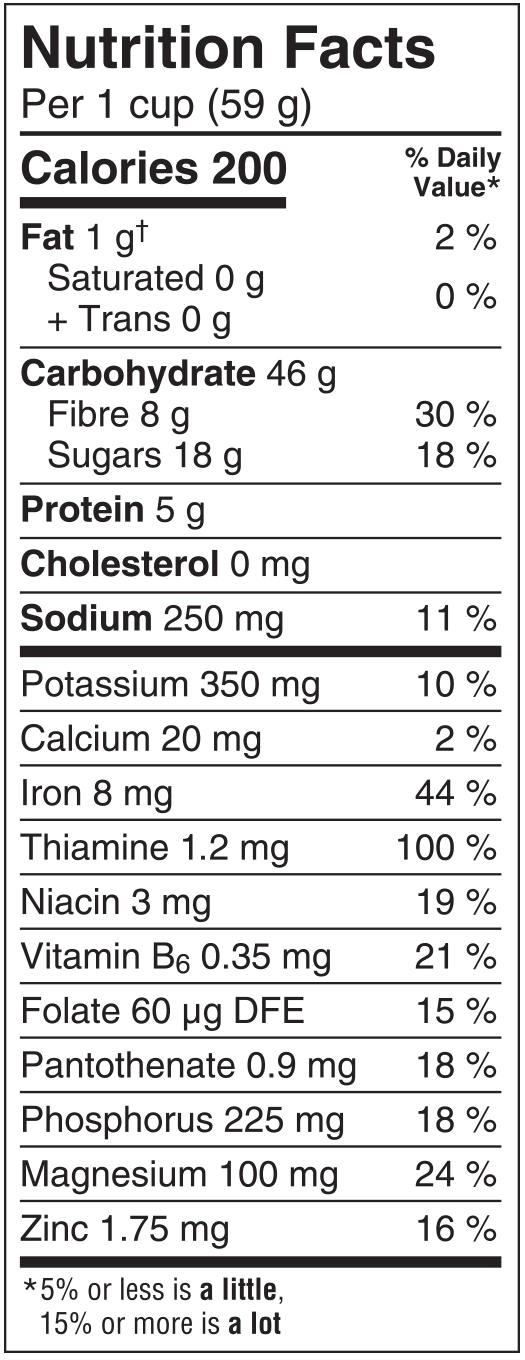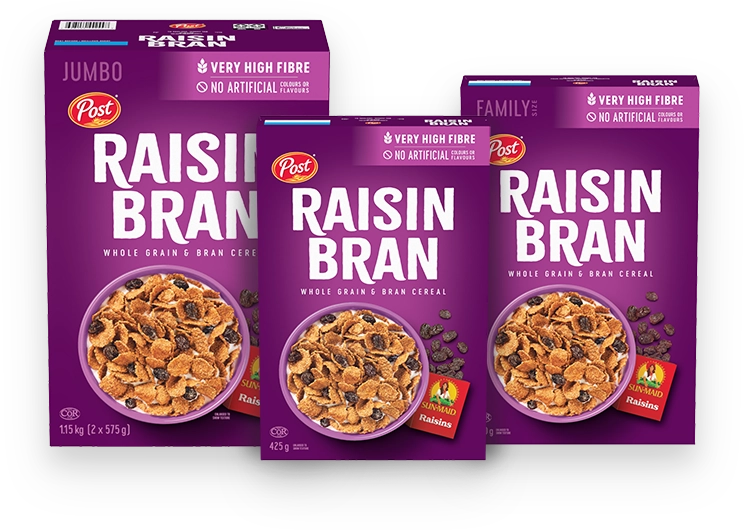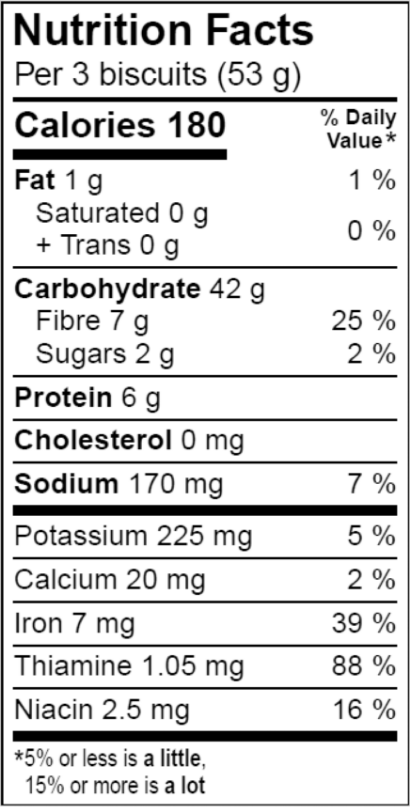Q & A
Have a question about Post Consumer Brands? We have an answer! See below to read frequently asked questions, or contact our consumer affairs department for more information.
“Whole grains” is a descriptor for certain foods such as wheat, oats, barley, and rye which are “kernels”. A whole grain kernel is made up of three parts: the bran, the endosperm and the germ. The bran is the outer layer and provides most of the dietary fibre. The endosperm is the middle part of the kernel, and stores the protein and carbohydrates. The germ is the inner core, and contains some protein, vitamins, minerals and unsaturated fats. A refined grain (like wheat flour) typically has the bran and germ components removed, leaving the nutritional profile of the endosperm of the original kernel (also known as a “wheat berry”). Health Canada’s Food Guide recommends making at least half of your grain products whole grain each day. Many Post products are made with whole grains (see each product’s ingredient line and nutrition information for more details).
We understand and share the concerns expressed by consumers who are affected by food allergies and intolerances. Food Allergic consumers and consumers with food intolerances should rely on our package ingredient labels for the most accurate information on a product. If a product contains any of the ten priority allergens listed below, it will be clearly listed in bold print in the Allergen Statement following the ingredient declaration.
The Ten Priority Allergens are: Peanuts, Tree Nuts (almonds, Brazil nuts, cashews, hazelnuts (filberts), macadamia nuts, pecans, pine nuts, pistachios and walnuts), Sesame, Mustard, Milk, Eggs, Seafood (Fish, Crustaceans and Shellfish), Soy, Wheat & Sulphites (a food additive). Also declared will be sources of Gluten protein from barley, oats, rye, triticale or wheat (or a hybridized strain of any of these cereal grains). Please consult Health Canada’s Food Allergies & Intolerances website for more consumer information on food allergens and intolerances.
Most of our cereal products are Kosher certified. If the product you are interested in is Kosher certified, its packaging will reflect its certification status and indicate whether the product is dairy. Kosher certifications may change over time, so the best way to determine a product’s Kosher status is to look at the front of the package. Our product packages will always reflect the most current information.
The information can be found on our US Corporate website. Click on this link for more information.
Contact us here.
Questions or comments for Post? Contact us here.
We issue coupons through various marketing media. Visit the Post Foods Canada Facebook page or sign up for our newsletter to receive the most up to date promotions.
The recipes section of this site features tasty recipes that are made with Post products.
We recommend storing your opened cereal box in a cool, dry place. Be sure to close the liner and box tops tightly after each use.
All Post cereals have a code (or “Best Before”) date on the top flap of the box. For example, if the code date reads “17JN01,” the corresponding “Best Before” date is June 1, 2017. By referring to the Best Before date you can be sure the product you’ve chosen is at peak freshness at the time of purchase and for a reasonable period of time thereafter, when stored unopened in a cool, dry place. We cannot guarantee the freshness past the Best Before date code.
The Post Cereals tradition dates back to 1895, when C.W. Post made his first batch of “Postum,” a cereal beverage. Since then, Post has followed a path of delicious innovation, creating cereals that have defined the breakfast experience for generations of families. Click here to learn more about Post history.


